Local trains in Fukushima 2 (JR Tadami Line, JR Ban-etsu West Line)
Table of Contents
1: Abukuma Express
2: Fukushima Transportation Iizaka Line
3: Iizaka Onsen
4: Symposium on Living with Railways
5: JR Ban-etsu West Line
6: Dinner on Day 1
7: JR Tadami Line
8: Hayato Onsen “Tsuru no Yu”
9: Tsurugajo castle
10: Sazae-do
11: Dinner on Day 2
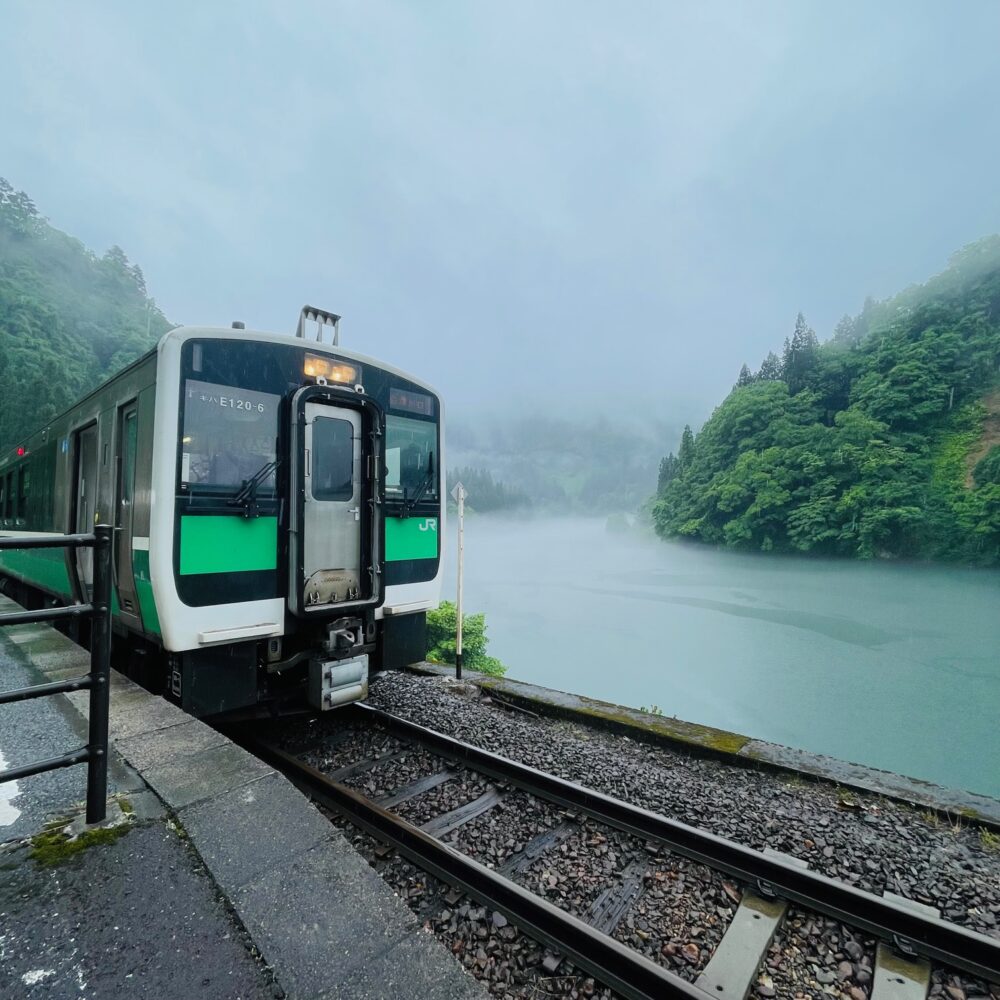
7: JR Tadami Line
On the morning of the second day, I rode the JR Tadami Line, which had been the main theme of the previous day’s “Symposium on Living with Railways.” The Tadami Line is a JR East line connecting Aizu-Wakamatsu Station to Koide Station in Niigata Prefecture. In October 2022, the entire line was restored for the first time since the torrential rain disaster. Since then, many tourists have been traveling on the Tadami Line, and on weekends and holidays, the line can become as crowded as the Yamanote Line in Tokyo.
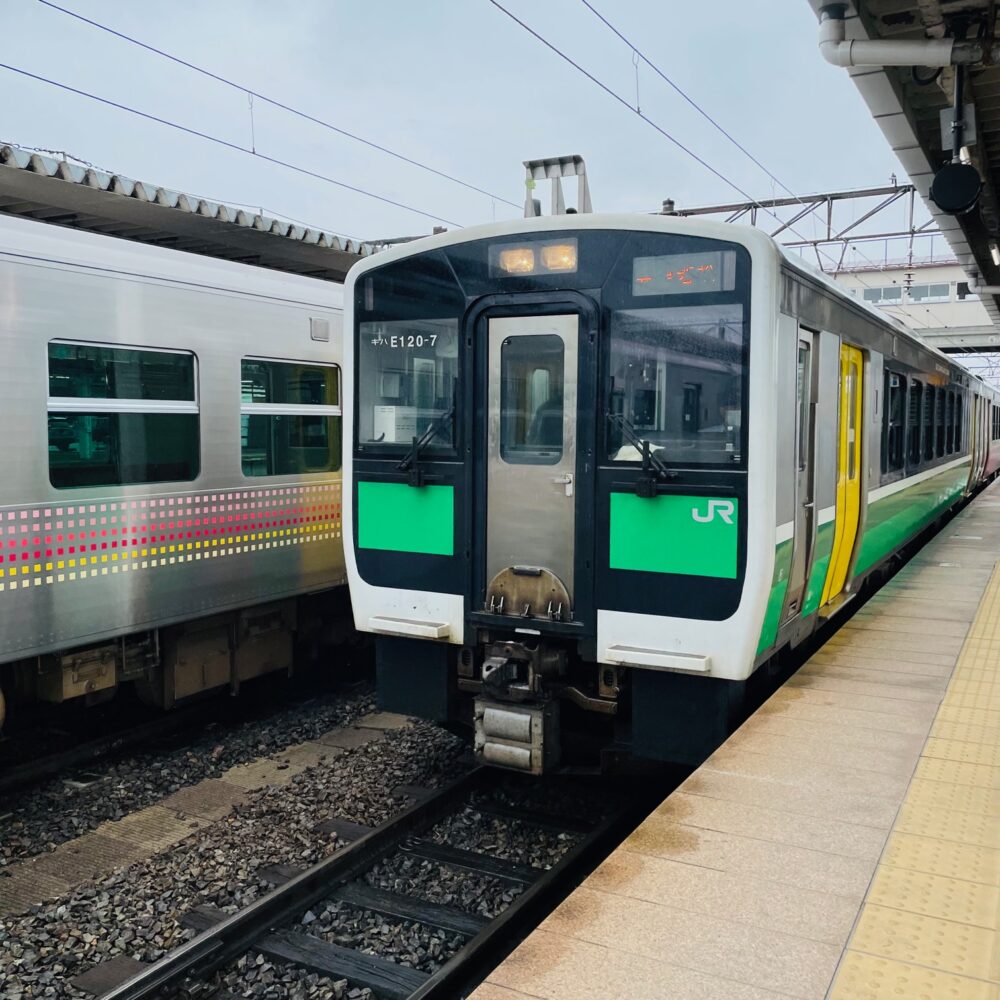
I went to the Aizu-Wakamatsu station earlier than the departure time of the Tadami line. But the train was not crowded, and I was disappointed. Because both the owner of “Mugitoro (The restaurant for my last dinner)” of the previous day and the participants of the “Symposium on Living with Railways” said, “The Tadami Line is always crowded.”
After the commuting students got off the train, I was the only one on the train. Later I heard there were hardly any passengers on weekdays when it rains.
Tadami Line ran beside mountains and rice fields. I enjoyed the strange sensation of the train running through a tunnel of fresh greenery.
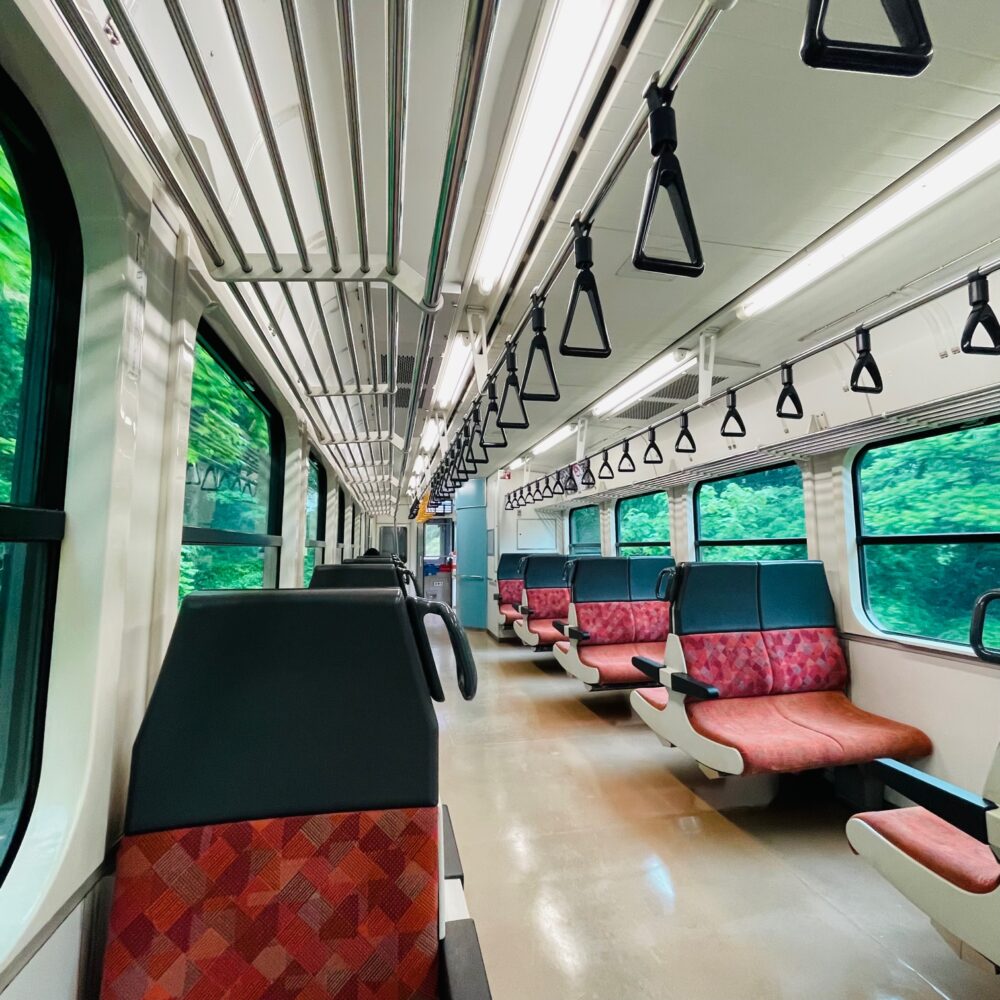
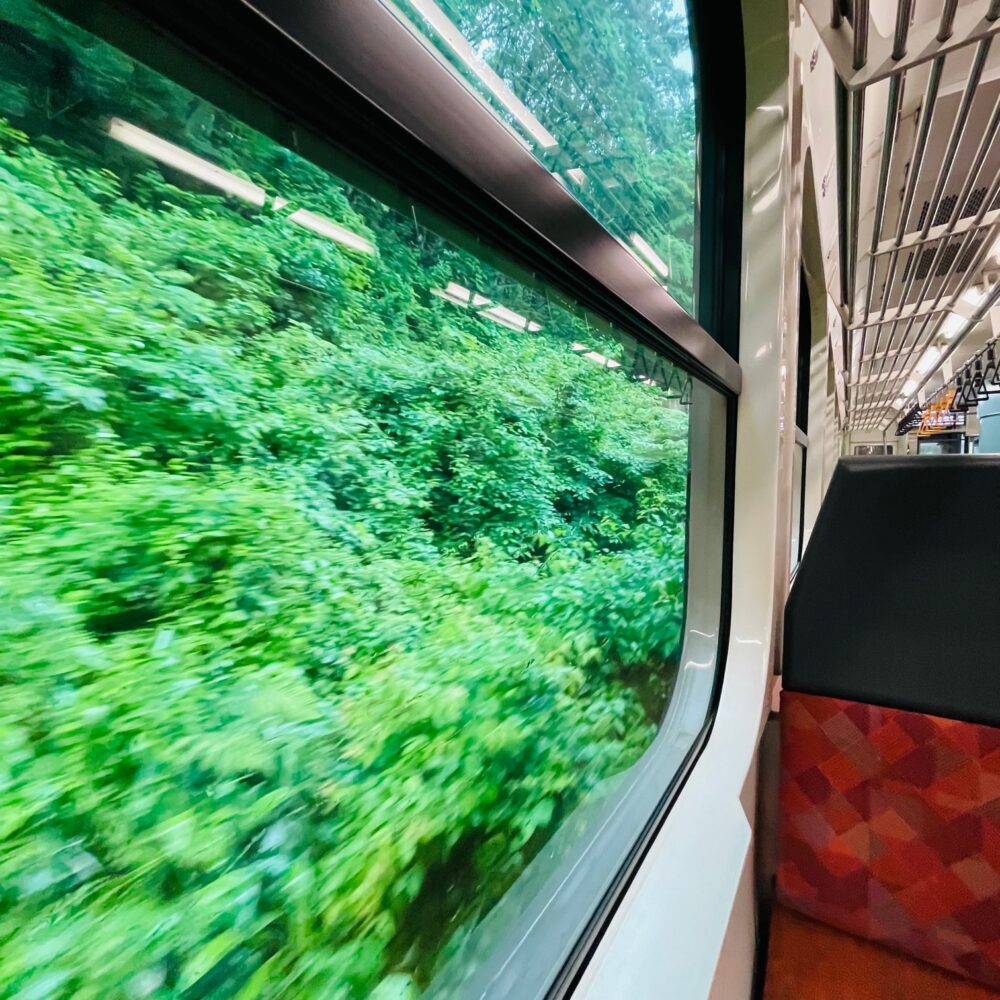
JR East has also published the operating results of part of the Tadami Line. Transport revenues between Aizu-Wakamatsu Station, Aizu-Kawaguchi Station, and between Tadami Station, and Koide Station were JPY 96 million. However, the operating deficit was JPY 2.105 billion, which, like the JR Banetsu-West Line, is a tough business situation. In addition, the number of passengers on this section of the line between FY 1987 and FY 2021 has fallen by 59% (from 2,864 to 1,171 passengers per day), which is severe. After restoring the entire line, the railway has successfully attracted Japanese tourists on holidays. Still, it is essential to attract foreign tourists to compensate for the low number of weekday passengers.
As an aside, the Tadami Line Portal Site is the best quality railway-related website. It contains beautiful photos and information, making the site easy to read. You can feel the love for the Tadami Line. The only disappointment is that the only foreign language display is the guidebook in PDF format – PDFs are difficult to read on a smartphone, so it may be difficult for foreign travelers to view the guidebook locally. We want the person in charge to consider a website that is easy for foreign travelers to view on their smartphones.

8: Hayato Onsen “Tsuru no Yu”
I planned to get off at Aizu Miyashita Station and use a rented bicycle to visit the First Tadamigawa Bridge. However, as it was raining, I changed our plans. I went to Hayato Onsen Tsuru no Yu, which the owner of Mugitoro had told us about the day before. Tsuru no Yu is a hot spring less than a 10-minute walk from Hayato Station.
Legend has it that about 1,200 years ago, cranes bathed in the hot spring and healed their injured feet. Due to the iron content, the water is yellowish-brown. This hot spring water flows directly from the source. It is a natural medicinal hot spring that is particularly effective for recovery after trauma or surgery.
At this ‘Tsuru no Yu,’ I enjoyed a spectacular view. The breathtaking view is of the Tadami River covered in river mist. The river mist reached the open-air baths, and it was a magical experience as if I was soaking in a hot spring in the clouds. It was the most exciting hot spring experience of my life. This river mist tends to appear when it rains. In rainy weather, you should take the Tadami Line to the ‘Tsuru no Yu.’ Having been allowed to touch a bear the day last night, I immediately had a ‘good thing’ the next day. I am grateful to the owner of Mugitoro for telling me about Tsuru no Yu.
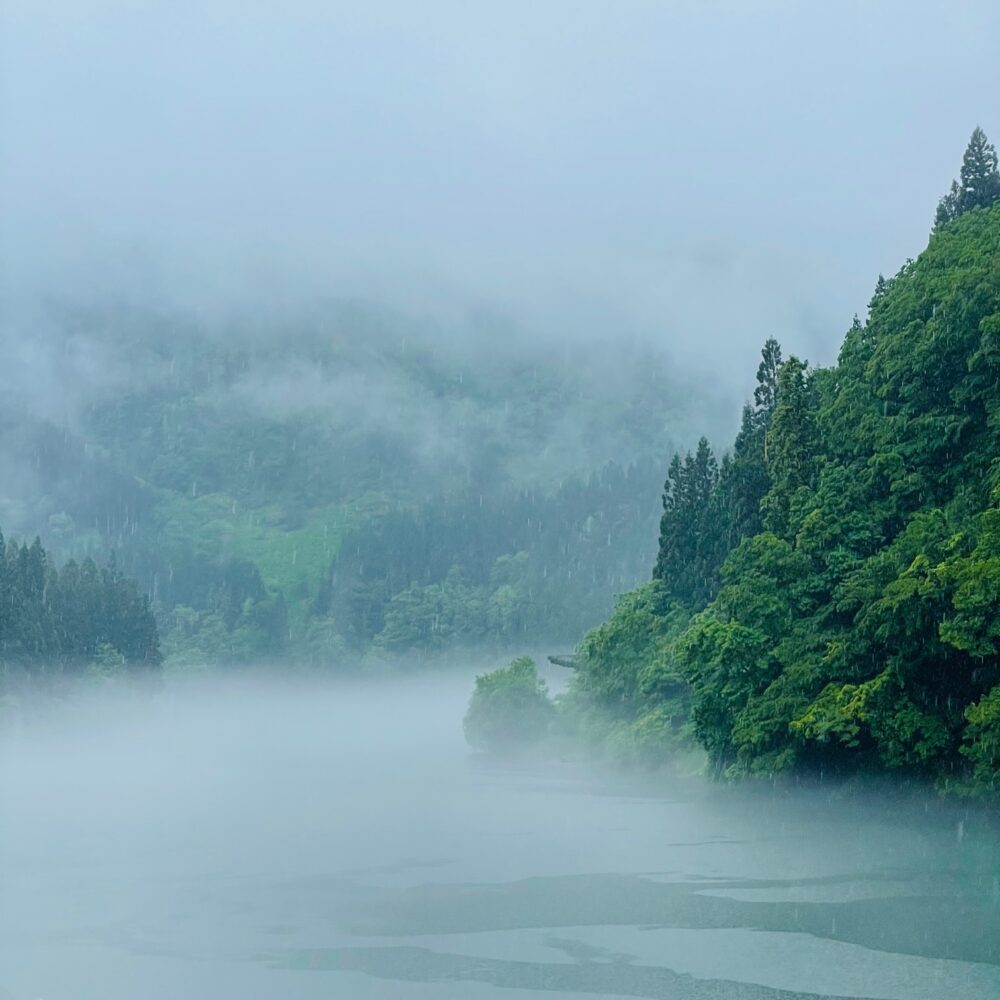
After bathing, I had lunch at the Tsuru no Yu restaurant. I had the ‘Tsuru no Yu Ramen’ and ‘Mini Sauce Cutlet Bowl.’ Tsuru no Yu Ramen is a salt ramen with hot spring water used in the soup. Unlike ordinary salt ramen, it has a rustic taste. It is delicious and makes me feel healthy from the inside out. The ‘Tsuru no Yu Ramen’ is a half-size ramen, as we should drink only a little hot spring water.
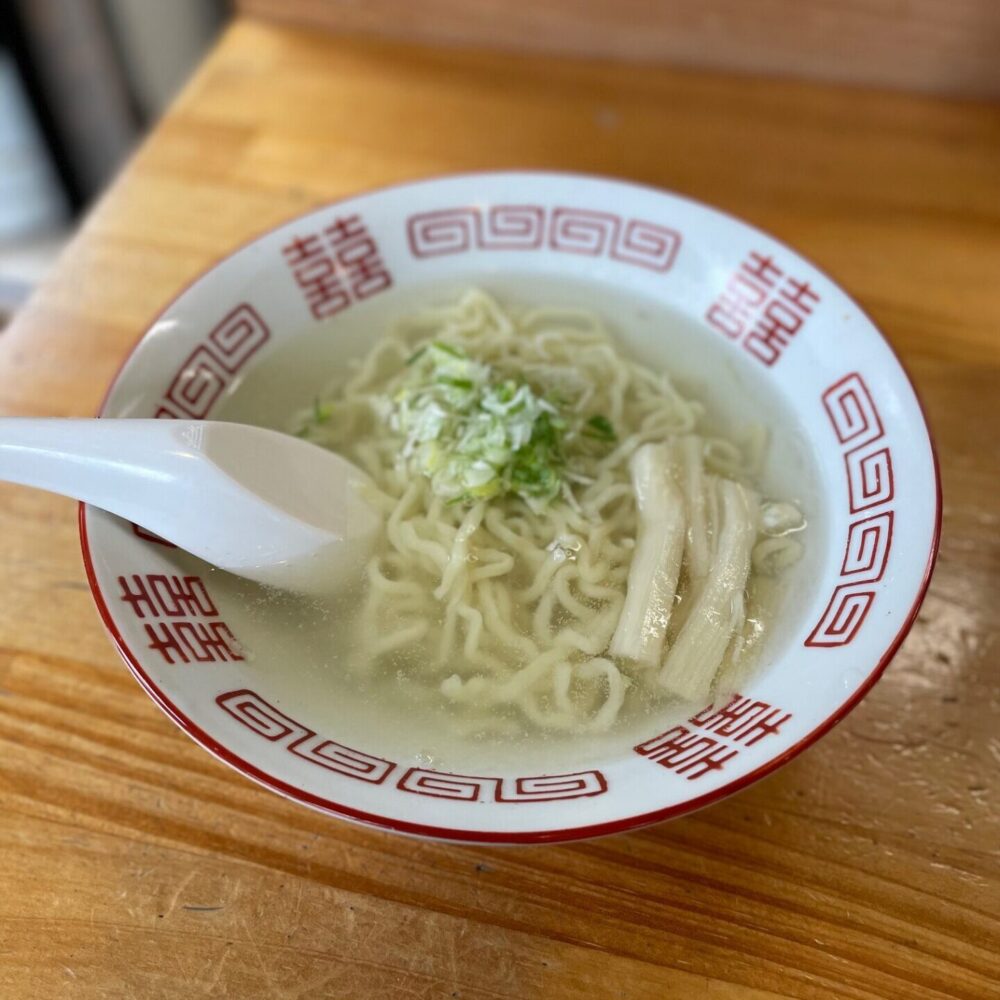
Sauce Cutlet Bowl is a specialty of Aizu Wakamatsu City, first served by the Wakamatsu Shokudo in 1930. It is said that Aizu Wakamatsu was the first city in Japan to add cabbage to sauced pork cutlet bowls. It was a little sweet but a delicious ‘sauced pork cutlet bowl.’
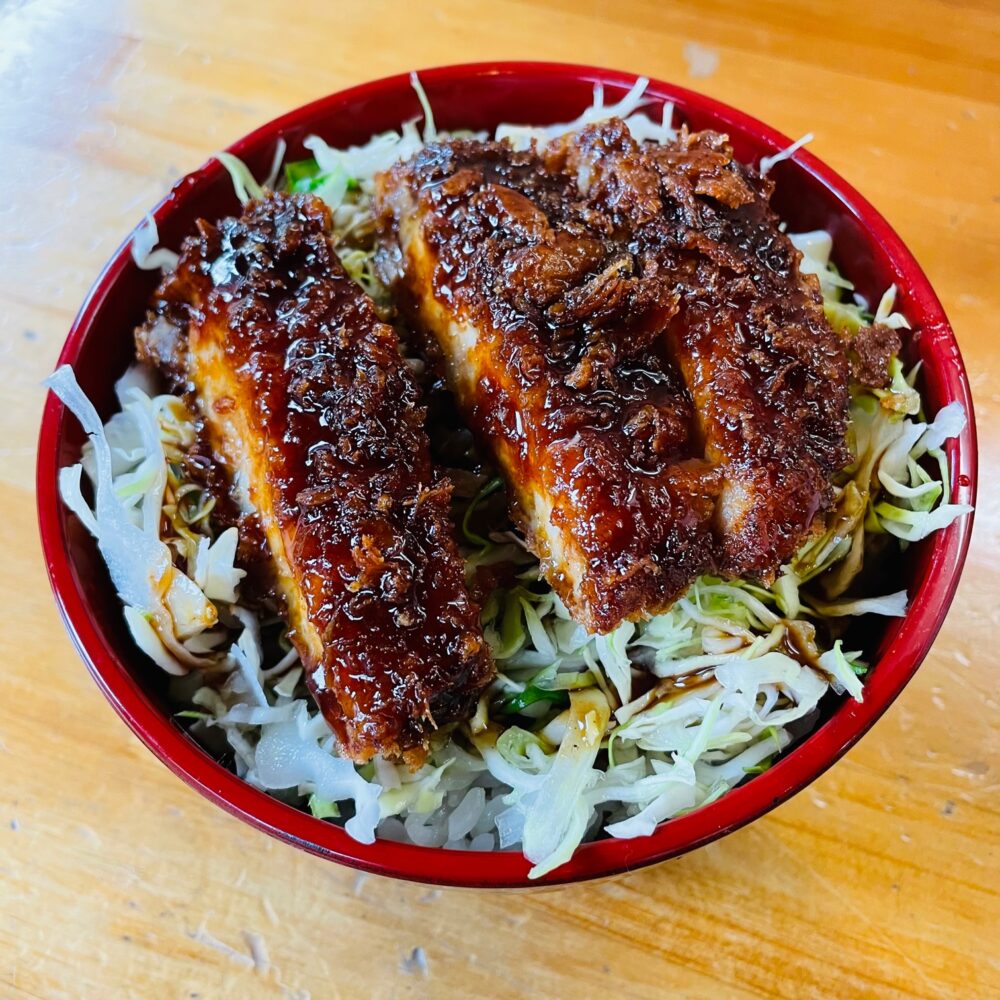
9: Tsurugajo castle
After a hot spring and eating at Tsuru no Yu, I returned to Aizu Wakamatsu Station. We went to Tsurugajo Castle (Aizu Castle).
Tsurugajo Castle dates back to 1590 when the warlord Gamo Ujisato, a vassal of Oda Nobunaga and Toyotomi Hideyoshi, entered Aizu and 1592, built a full-scale modern castle with stone walls and a moat. During the Boshin War of 1868, Tsurugajo Castle, where the Aizu feudal lords were holed up, was surrounded and bombarded by the Meiji Government forces. The keep was dismantled in 1874, but the exterior was rebuilt in reinforced concrete in 1965.
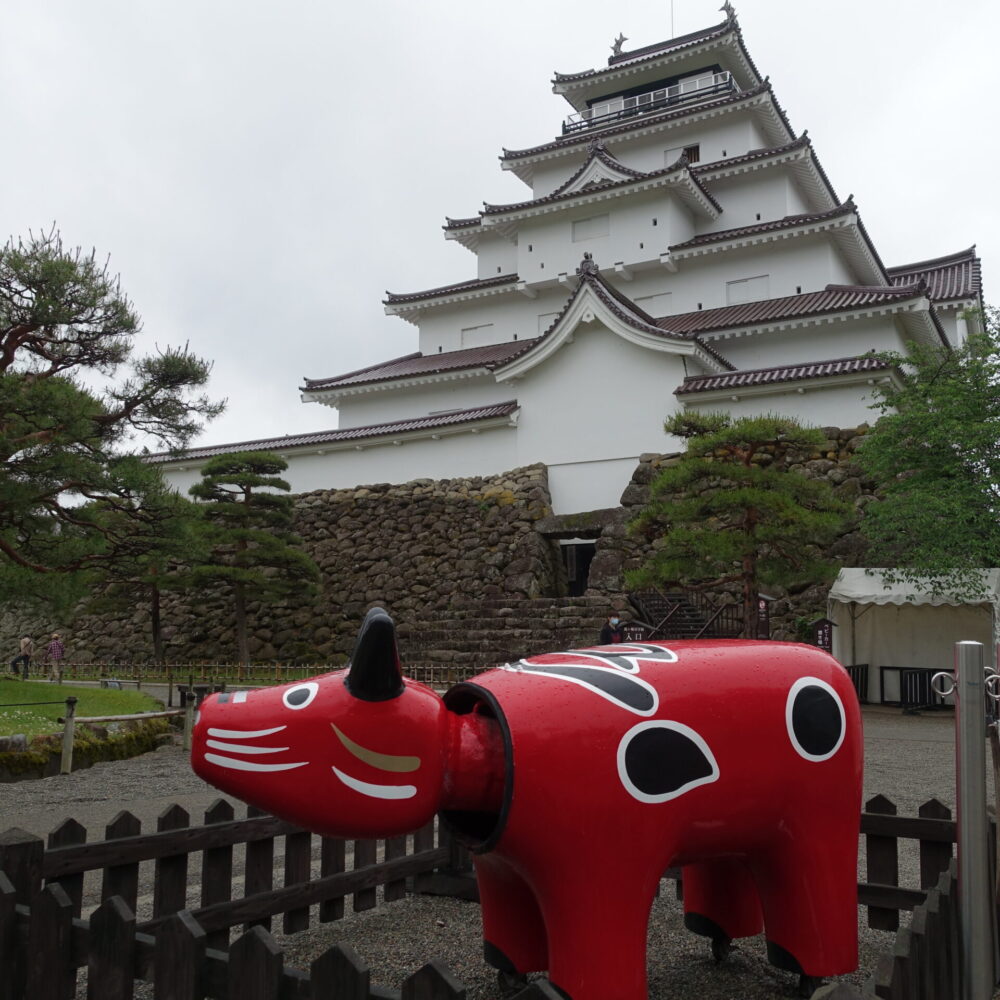
Although the Tsurugajo castle is made of reinforced concrete, it is one of the most beautiful keeps among the many castles in Japan. Many tourists took many photos.
Volunteers give free guided tours at Tsurugajo. This is a very welcome system for tourists.
10: Sazae-do
After Tsurugajo Castle, I went to Sazae-do. There is a ‘Machinaka Sightseeing Bus’ for tourists in Aizu-Wakamatsu. Still, most go via Higashiyama Onsen, so tourists like me who don’t need to go to Higashiyama Onsen felt that it could have been a better use of time. Incidentally, it takes about 15 minutes to go directly from Tsurugajo Castle to Sazaedo by taxi. Still, it takes 35 minutes if you take the Machinaka Shuyu Bus, which goes via Higashiyama Onsen.
The 16.5 m high Buddhist temple, built in 1796, stands halfway up Mount Iimori, where the graves of the Byakkotai are located. The official name is ‘Entsu Sansodo’.

The interior of the hexagonal building has a double spiral ramp, with separate ramps going clockwise up and counterclockwise down. Visitors can ascend from the entrance to the top floor and descend to the exit without passing another person. Thanks to this structure, the pilgrimage can be fulfilled simply by proceeding through the hall. Because of this curious structure, Sazae-do has been designated a National Important Cultural Property.
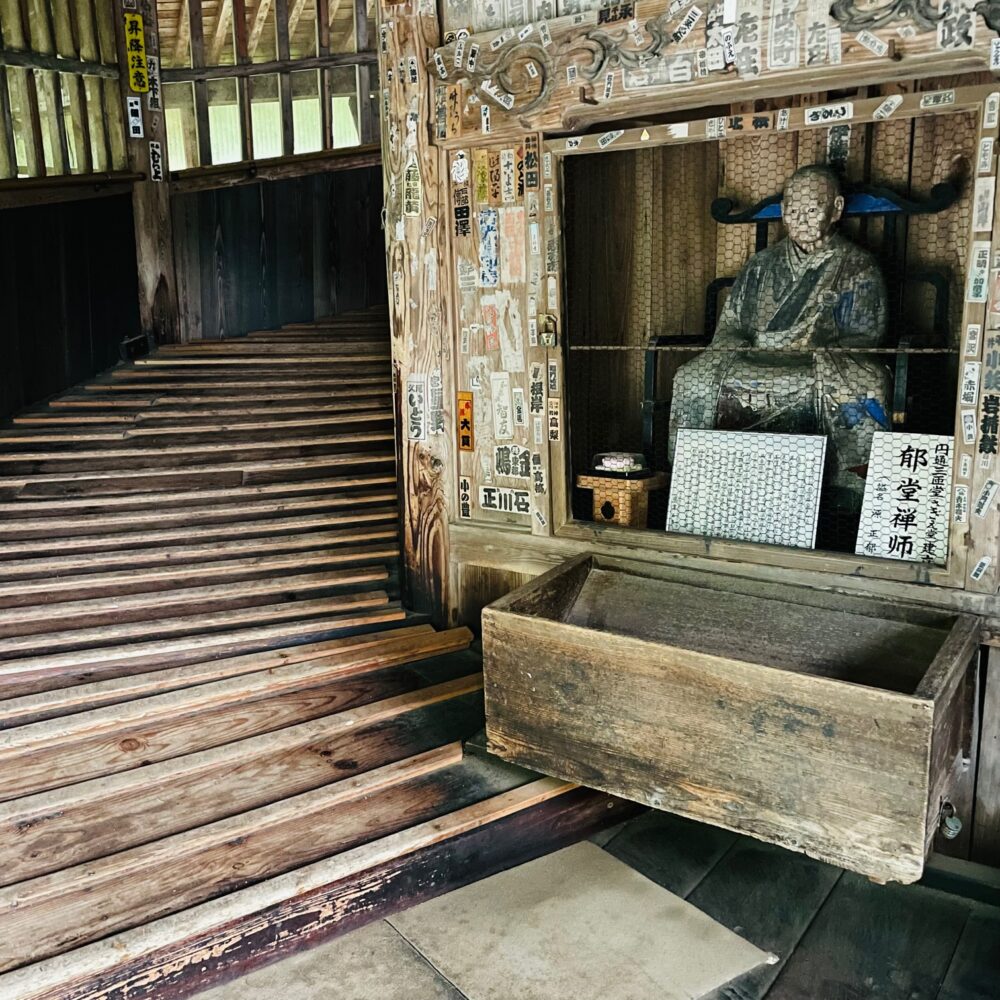
There were many tourists at Tsurugajo Castle but none at Sazae-do. Is this due to the inconvenience of the ‘Machinaka Shuukyu Bus’? It is a pity as it is a valuable building.
We also visited the former Takizawa Honjin near Sazae-do. The former Takizawa Honjin was a resting place for the feudal lords during the “Sankin Kotai (a system under which feudal lords in the Edo period were required to spend every other year in residence in Edo).” It also served as the Aizu clan’s headquarters during the Boshin War. The building has bullet holes and sword scars here and there. The former Takizawa Honjin was built in 1678 and is designated as a National Important Cultural Property.
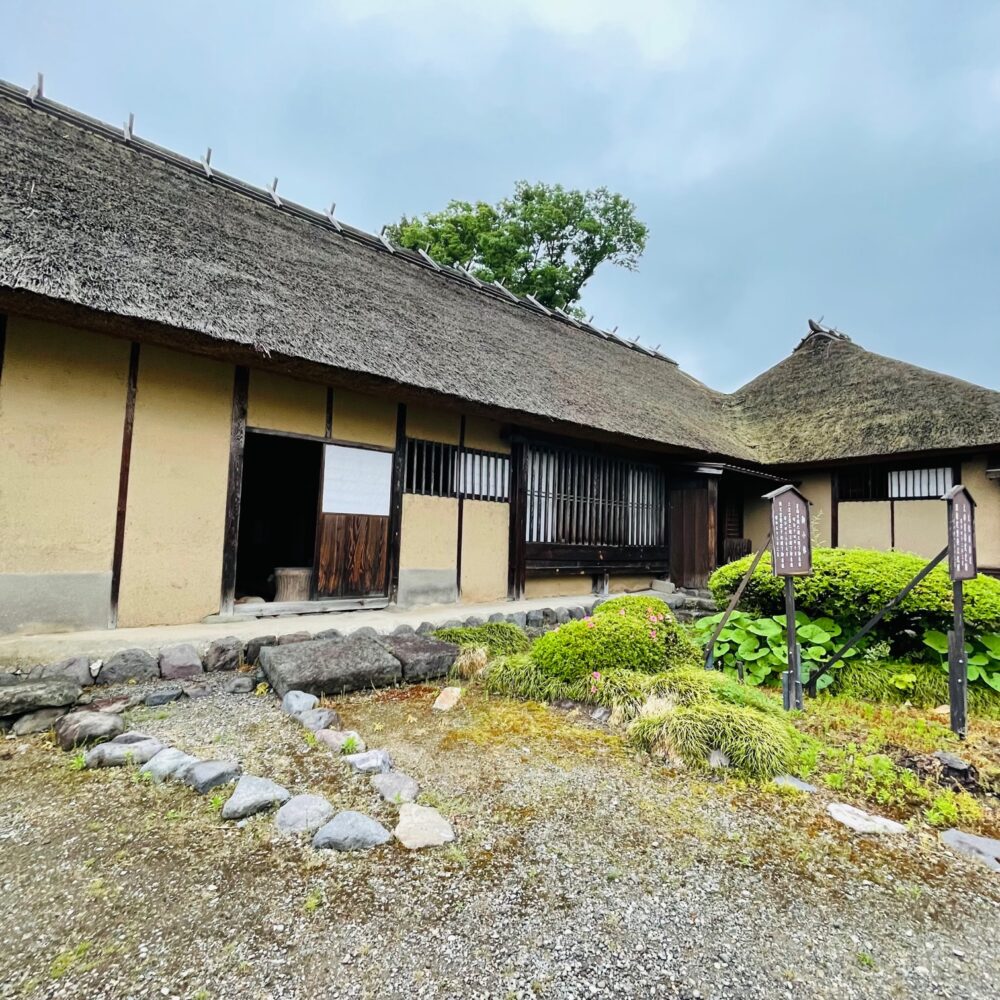
11: Dinner on Day 2
After sightseeing in Aizu-Wakamatsu, I had dinner at the local restaurant Takiino, which is famous for its original ‘Wappa-meshi.’ Wappa-meshi is a traditional local dish of Aizu, made by steaming Aizu rice and various ingredients in a bowl made from a thin, bent wooden board. It is also a local dish of Niigata Prefecture.

I ordered the Aizu set of “Wappa-meshi” and “Aizu-soba” at “Takino.” Aizu Soba is a type of soba unique to Ouchi-juku, which we eat using leeks instead of chopsticks. Ouchi-juku is a beautiful inn town in Minami Aizu-gun, Fukushima Prefecture, where the appearance of the Edo period remains. Honestly, it isn’t easy to eat soba using leeks as chopsticks. However, It is excellent to eat it during sightseeing. I enjoyed the ‘Wappa-meshi’ more.


Other dishes at Takino were ‘Kozuyu’ and ‘Ika ninjin.’ Both are local dishes of Fukushima Prefecture. Kozuyu has been selected as one of the 100 best local dishes by the Ministry of Agriculture, Forestry and Fisheries, while ’Ika ninjin’ is one of our regional cuisines. Kozuyu is a local dish made of Aizu lacquerware and contains many ingredients such as kikurage mushrooms, brackens, and taro cooked in scallop soup stock. ‘Ika ninjin’ is a local dish made by chopping dried Japanese common squid and carrots into small pieces and marinating them in a sweet sauce. Ika-ninjin is similar to Matsumae pickles in Hokkaido. The herring used in the pickled herring with Japanese pepper that I ate the day before was also brought to Aizu from Hokkaido via Niigata on the Agano River. This ‘Ika-ninjin’ also uses Pacific flying squid. This marine product cannot be found in the inland Aizu region, so it can be said to be a local dish born from the distribution routes of Hokkaido, Niigata, the Agano River, and Aizu.
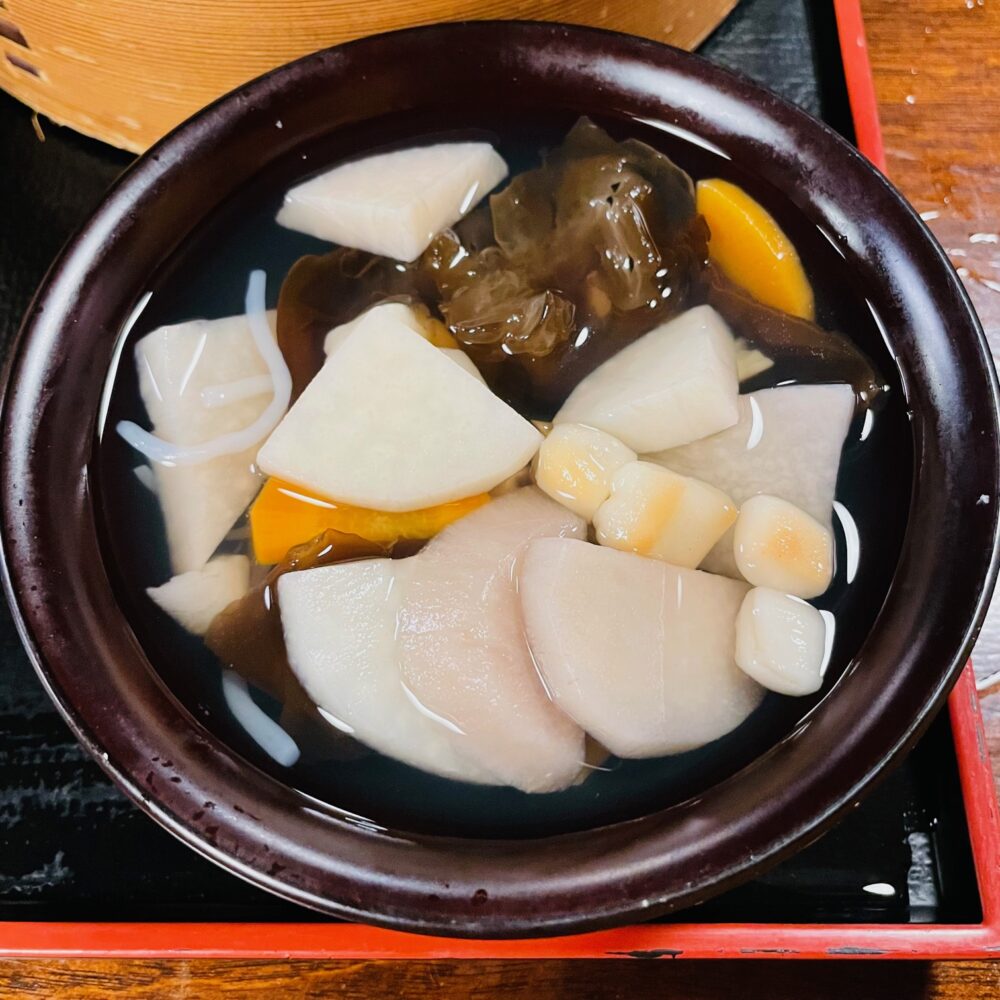
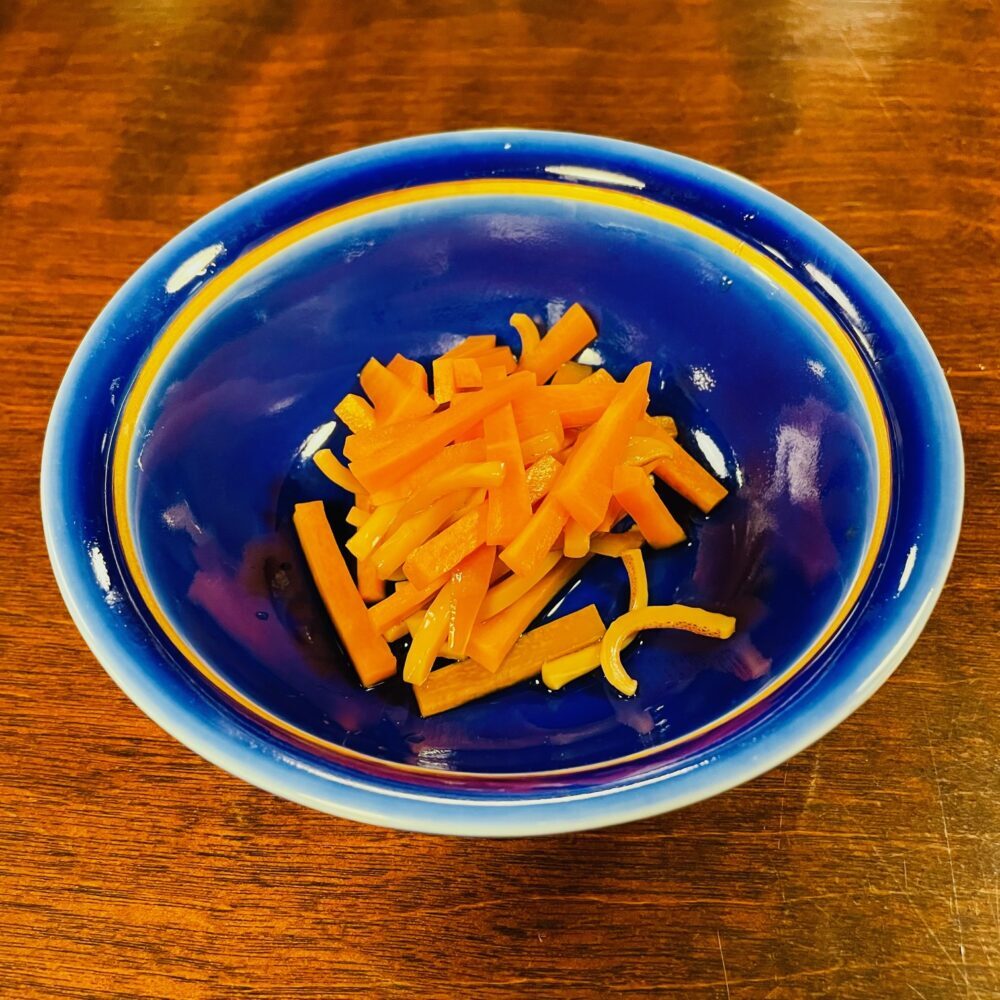
After the Takino, I wanted to try horse sashimi, so I went to Izakaya Koryu and had sakura sashimi, sakura yukke sashimi, and sakura ‘Shiro Motsu (entrails) sashimi.’ It was delicious horse meat. There are various theories as to why horse meat is called sakura-meat, such as ‘sakura’ for horse meat, ‘peony’ for boar meat, and ‘maple leaf’ for venison, which spread as a secret word to hide the fact that eating beast meat was forbidden in the Edo period.
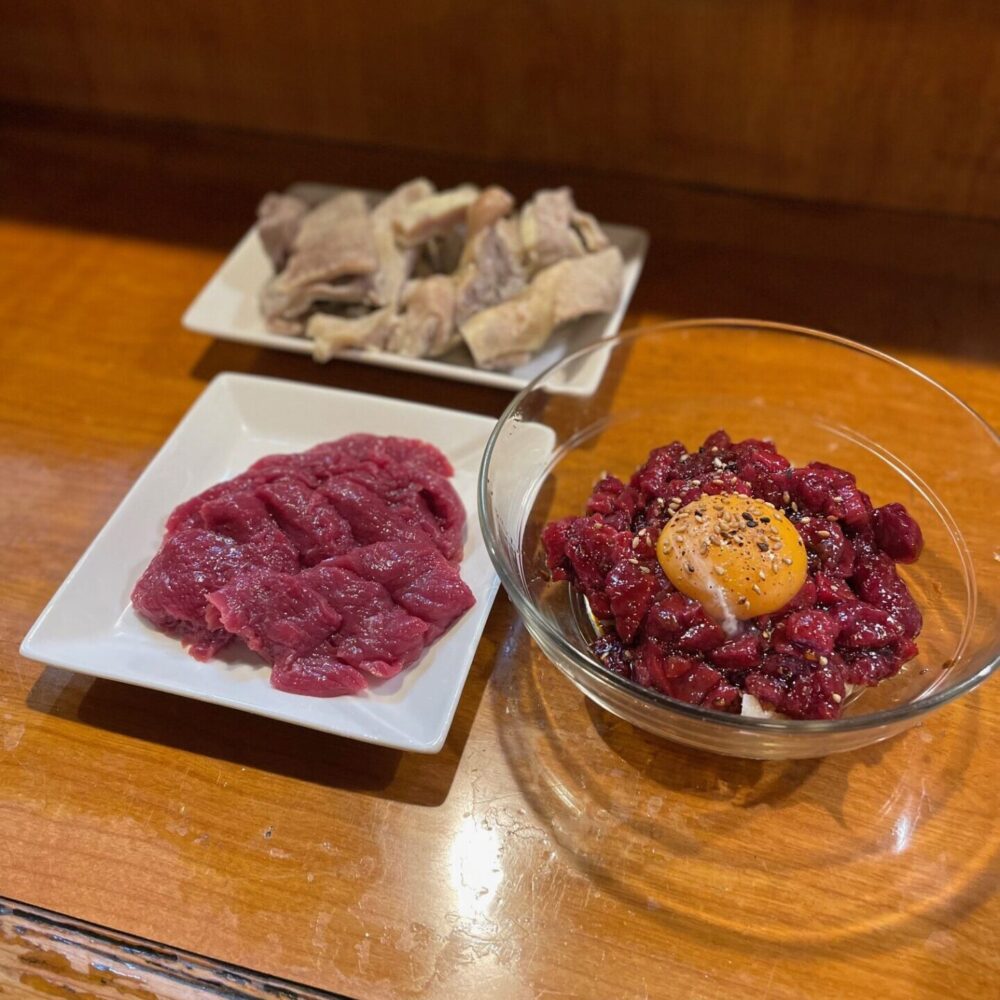
After a satisfying dinner, I returned from Aizu-Wakamatsu Station via Koriyama Station to Ueno Station on the Shinkansen. On the way back on the JR Ban-Etsu-West Line (between Aizu-Wakamatsu and Koriyama Stations), the train stopped for a while because an antelope appeared on the tracks, reminding us of the rich nature of Fukushima.
